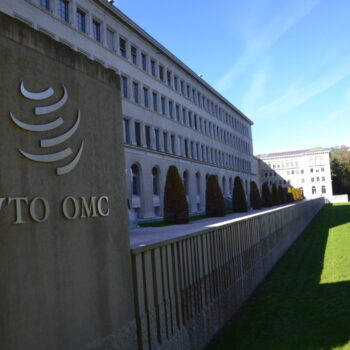Transparency and long-term planning are the only ways to reduce the cost of the transition and align climate and energy policies, argues Quentin Genard of E3G. The EU’s Governance Regulation can do that.
Donald Trump’s decision to withdraw from the Paris Agreement amounts to a challenge to Europe. Are we or are we not serious about climate change?
There are encouraging signs that we are ready to step up to the plate. The responsibility is onerous because we know that if we don’t do so, this will be a missed opportunity. If we are to get it right, however, joined-up thinking and real cooperation between EU member states is going to be a pre-requisite.
Each member state will now have to implement its decarbonisation commitments on the ground and revise them to ensure that we are all – collectively – doing our bit to staying well below 2°C warming – aiming for 1.5°C. To do this properly requires a national (or in the EU’s case coordinated) framework that encourages foresight and reduces risks for investors in clean tech. The 28 member states of the EU submitted their commitments to Paris en bloc and so the EU institutions and the member states are now busily designing the ways in which member states can turn their commitments into actions and submit their national plans for decarbonisation to 2030 and beyond. If they get it right, this modus operandi could become an instance of Europe showing the world how to create the right conditions for a second clean energy boom.
The EU is making a bold move by focusing, at the outset, on getting the structure, process and institutions right. The EU is making a bold move by focusing, at the outset, on getting the structure, process and institutions right. European leaders have agreed to break silos and embrace a comprehensive approach to the energy transition. In this sense, governance is a pure product of the Energy Union: it brings together climate and energy policies while focusing on the quality of the transition. There is no better embodiment of the Energy Union.
The next step, though, is to ensure that policies really do align in practice: that climate and energy polices pull in the same direction, that member states cooperate and coordinate their efforts, that short-term needs do not frustrate long-term ambitions and that the whole process is streamlined and responsive to new developments.
If the EU gets this right, it will make the lives of energy and climate ministers in member states infinitely easier and, by focusing on attracting investments, it will lower the cost of capital and ensure the transition is completed as cost-effectively as possible.
As the Institutional Investors’ Group on Climate Change has highlighted, investors are ready to invest in Europe, but they want more ambitious policies and a stronger signal from policymakers. There is no shortage of investment opportunity: to reach the EU’s 2030 targets, the Commission estimates that €379 billion needs to be invested every year between 2020-2030 (not including transport).
There is no doubt the private sector will play a crucial role as public money needs to be augmented with private to deliver the sums required. To really win their backing, all investors need to be 100% sure that European policymakers are fully committed to this in the long-term (remember that investment in energy infrastructure is based around a decades-long horizon). So adopting credible 2050 strategies, underpinned by the end goal of net-zero emissions as soon as possible, that will guide investment decisions will radically reduce the risk of stranded assets.
With or without America’s help, the Paris Agreement now provides the framework to keep the world on track for average temperature rises of well below 2°C.
Every five years, the 194 (195 with the US) parties will meet to “take stock” of progress. It is highly likely that most of them will decide to uprate their commitments to limit the impacts of climate change and get closer to 2°C. This rhythm should be mirrored in the EU to allow for more ambition in legislation over time. Without this, there is a risk that the current 2030 energy and climate targets will become redundant, as progress in the real economy simply overshoots them. There is no reason to keep the targets so low.
The energy sector still represents a major chunk of emissions. Breaking the silos of energy and climate policies will help speed up reductions in greenhouse gases emissions while boosting the EU’s first mover advantage with these technologies.
But the devil here is in the detail. If the Commission’s proposal strikes the right balance between climate and energy concerns, the European Parliament and the Council need to give the same weight to climate and energy concerns. The risk is clear: bringing back the silos the proposal is trying so hard to eliminate and giving the upper hand to one policy field over the other. The Parliament made the right move by requiring that both its energy and environment committees scrutinise the file on an equal footing because, as the rapporteurs explain, climate and energy are stronger together. But this is not the case yet in the Council, where energy attachés are firmly in the driving seat. Climate attachés, although very busy, should seize this opportunity so that the EU can “put Paris into practice”, otherwise, frankly, it will just be business as usual and an opportunity will have been missed.


